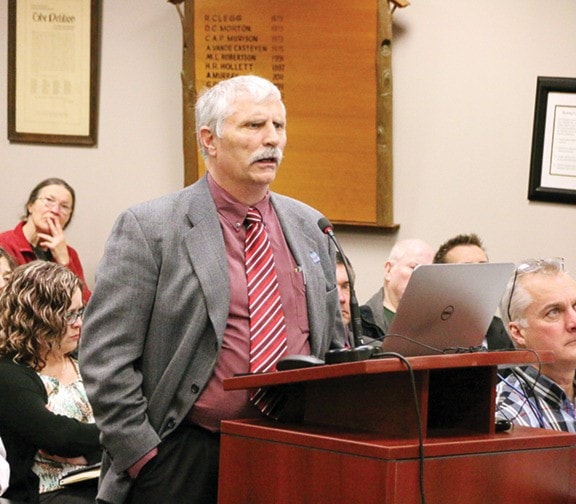ROBERT BARRON CITIZEN
There were 41 alcohol-related deaths in the Lake Cowichan area in 2013, and another 35 in the Cowichan Valley area in the same year.
Paul Hasselback, medical health officer for central Vancouver Island, also told Duncan’s city council earlier this week that alcohol consumption is increasing in the region, and across Vancouver Island.
In his presentation, “Substance Use and Misuse”, Hasselback said the Lake Cowichan area has the distinction of having the highest drinking rates on the Island, with an average intake per person of approximately 17 litres of “absolute alcohol” per year.
One litre of absolute alcohol is the equivalent of about 58 standard drinks.
At approximately 10 litres per year per person, the Cowichan Valley is close to the Island’s average for drinking alcohol.
Lake Cowichan mayor Ross Forrest said in a previous interview that there are several reasons why his community’s alcohol consumption appears to be higher than others on the Island.
He said the main one is that Lake Cowichan’s population of approximately 3,100 people more than doubles with thirsty tourists during the summer season, which keeps local liquor stores busy.
Hasselback said tobacco is a far bigger killer than alcohol in B.C., with 4,358 deaths related to smoking in the province in 2013, compared to 1,281 deaths related to alcohol in the same year.
Hasselback said overdoses from illegal drugs have seen a resurgence on the Island since 2010 when there were about 25 reported deaths, compared to approximately 60 deaths in 2015.
“Substance use impacts have long been problematic and require community-wide solutions,” he said.
“Local governments can impact accessibility and can contribute to worsening or alleviating substance-use issues.”
Among other strategies, Hasselback suggested programs in schools to deal with effective prevention of drug use and addiction, access to early intervention activities through peer support and counselling, and increased access to detox and treatment programs in the region.
